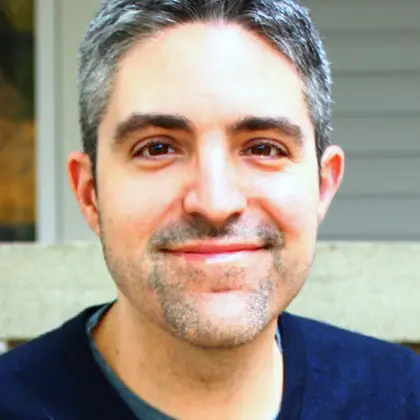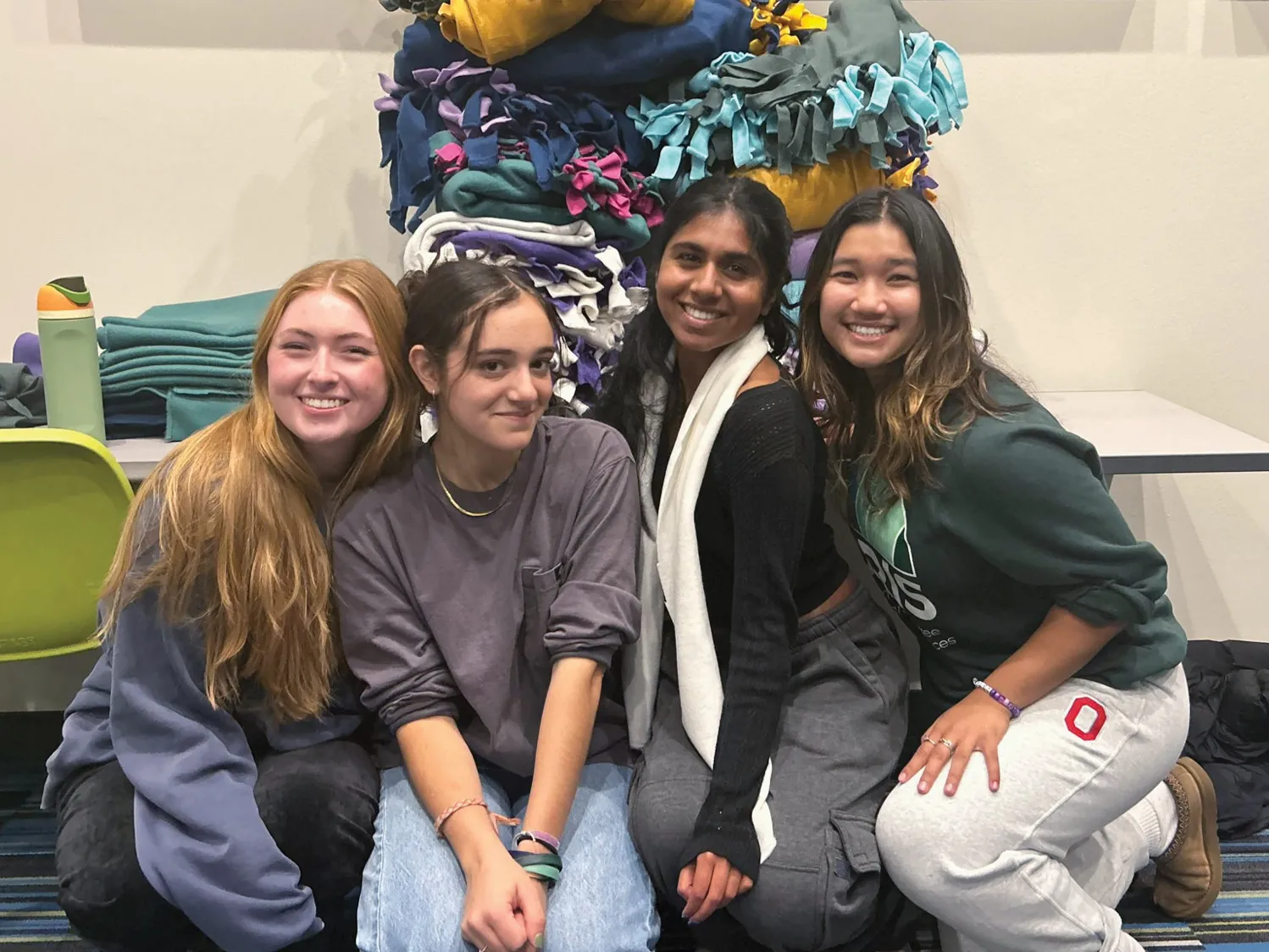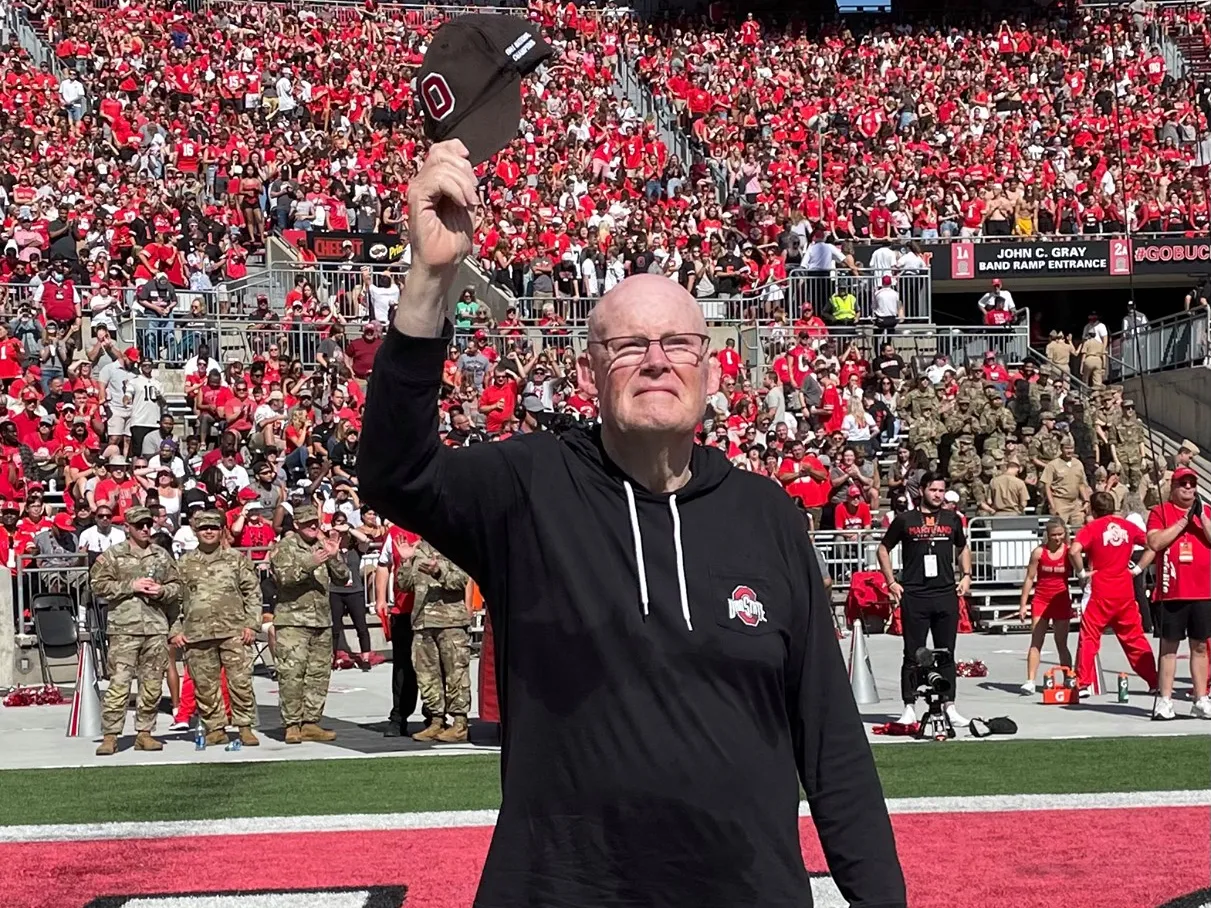

Prepared for this mission
President Walter “Ted” Carter Jr. has served more than 40 years at the highest levels of education and the military. He has a stellar record of leadership and a solid reputation for integrity and commitment to mission. Now, he brings those values to your alma mater.
Spring semester classes are beginning, and Walter “Ted” Carter Jr. is headed to work on January 8. He emerges from the Oval and crosses High Street, looking determined in his red tie, white shirt and dark gray suit with a Block O pin on its lapel.
On the sidewalk outside University Square South, a new building that houses his office and others, he is greeted by a throng of local media wielding microphones and cameras. Reporters are eager to hear from him one week into his tenure as Ohio State’s 17th president.
Someone calls out, “O-H,” and Carter is ready with the customary reply.
The group proceeds inside for an informal news conference in the lobby, where Carter, 64, responds to much tougher prompts in a confident, even tone. Faced with a barrage of questions on hot-button subjects — including the recent resignations of other prominent university presidents amid controversy — he exhibits the composure of someone who has spent much of his career under fire. As he has, literally.
Before leading the University of Nebraska for the past four years, Carter was a decorated Navy man. He graduated from the U.S Naval Academy and the Strike Fighter Tactics Instructor program, aka Top Gun. Carter served more than 38 years, rising to the rank of vice admiral. He logged over 6,300 flight hours, flew 125 combat missions, commanded a nuclear aircraft carrier, earned the Distinguished Flying Cross and Bronze Star, and set a national record with more than 2,000 landings on aircraft carriers.
After commanding a squadron of F-14 Tomcats, Carter spent a year and a half in the Navy’s nuclear engineering program — that military branch’s most academically rigorous — and learned how to deconstruct and reassemble a reactor. He later led the U.S. Naval War College in his native Rhode Island before returning to Annapolis and going on to become the Naval Academy’s longest-serving superintendent.


Chief of Staff JR Blackburn, left, and Carter cross the Oval and head toward the president’s office. (Photo by Logan Wallace)
All of these experiences have contributed to Carter’s readiness to lead Ohio State, with its six campuses, more than 65,000 students and internationally recognized academics, research, medical care and athletics.
“I’ve been very blessed to be able to fly with some of the best aviators in the world, graduate from Top Gun and ultimately command a nuclear-powered aircraft carrier,” he says. “It’s a city at sea, with similarities to this great campus. Even though this doesn’t move 30 knots through the water, we still have a mission. And we’re going to be able to stick to it, and we’re going to be successful.
“Ohio State is such an important part of the business development and the future of the state of Ohio and the entire world,” he says. “There couldn’t be a more exciting time than today to be able to influence the future — the future leadership of our country and the world — by providing the graduates of The Ohio State University.”
At the University of Nebraska, which Carter joined in January 2020, he launched a financial aid program guaranteeing full tuition for low- and middle-income students and oversaw enrollment growth that included record gains among underrepresented students.
Brian Hastings ’97, who worked in Ohio State’s Office of Advancement before taking his current role heading the University of Nebraska Foundation, saw those achievements firsthand.
“He exhibited the calm presence you would probably expect from somebody who’s landed fighter jets on aircraft carriers more times than anybody else,” Hastings says.

Carter’s poise under pressure is one of several reasons Hastings believes he will thrive in Columbus. He is a collaborative but decisive leader who puts in the work to thoroughly understand the issues at hand, says Hastings, who also points to Carter’s dynamic partnership with Lynda, his wife of 41 years, and his skill at public speaking.
“Anything we asked him to do, he trusted that we were putting him in the situation where we needed him most,” Hastings says. “And he delivered all the time.”
Carter has focused his early days in Columbus on listening and learning as he connects with a wide range of university constituencies. In doing so, he’s had many opportunities to stress his commitment to ensuring Ohio State advances in its broad areas of focus, prioritizes campus safety, protects free speech and illustrates the value of higher education in an age of increasing skepticism. At every turn, he espouses the university’s power to inspire people who’ll go on to change the world.
“The most important thing alumni should know about The Ohio State University is how proud they should be of their alma mater,” he says, “and how we will always do everything possible to protect and defend the reputation of this great institution.”
Distinguished University Professor Janet Box-Steffensmeier, who co-chaired the Presidential Search Committee’s University Advisory Subcommittee and holds academic appointments in political science and sociology, says Carter’s lofty ambitions for Ohio State in research, education, health care, the arts and athletics made him the ideal candidate for president.
“I think everybody is excited to hear this emphasis, across the board, on excellence,” Box-Steffensmeier says. “He’s out there leading on these important, big-picture topics that are confronting higher ed.”

Already comfortable in scarlet and gray, the Carters look forward to meeting many alumni in the months ahead. (Photo by Jodi Miller)

She also speaks highly of Carter’s personal integrity and his enthusiasm for meeting students, faculty, staff, alumni and state leaders. Like Hastings, she notes his grace under pressure.
“He has testified before Congress over 200 times,” Box-Steffensmeier says. “I think that shows you something.”
That steadiness will be essential to managing an organization as sprawling as Ohio State. Leading such a large, multifaceted university is a daunting, unrelenting job — and that’s much of the attraction for Carter.
“We are at a critical time in our nation’s history, maybe even the world, where higher education has come under attack. Some people even wonder about the value of an undergraduate or graduate degree,” Carter tells attendees at a University Senate meeting in late January. “I believe this is the institution among few others that can actually change the narrative of what the future of higher education is in this country. And I want to be part of that conversation. I want to be part of that conversation with each and every one of you.
“This is a great community, and I came to this job because I know how well you all take care of each other. I really appreciate the conversation, the candor, the ability to not be afraid to speak up and say where the challenges are.”
At the Senate meeting, as he did before the media on that first day of spring term, Carter calls Ohio State the largest, most complicated organization he has ever led. He is clearly prepared for the challenge.
“I’ve never felt more in my entire life that I’m where I’m supposed to be,” he says. “I’m proud to be one of you, proud to be a Buckeye.”

At his first University Senate meeting, Carter talks with Associate Professor of Psychology Ben Givens, the group’s secretary. (Photo by Logan Wallace)



